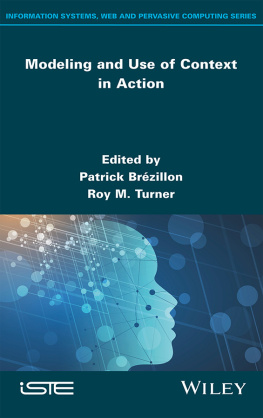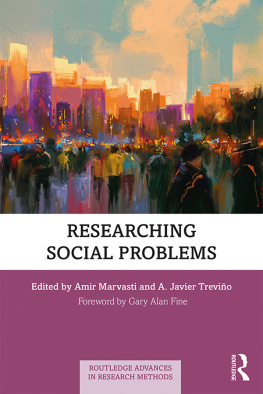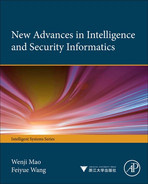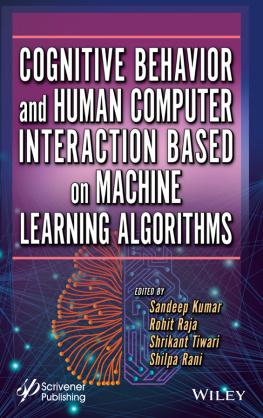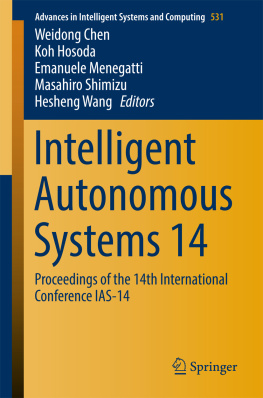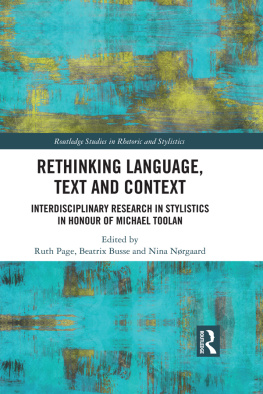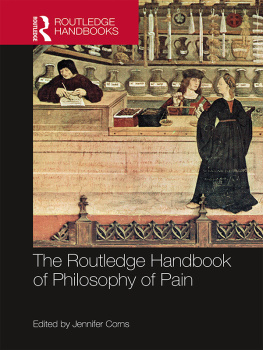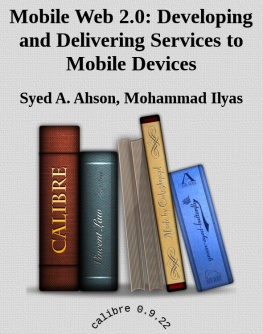
Modeling and Use of Context in Action
Edited by
Patrick Brzillon
Roy M. Turner

First published 2022 in Great Britain and the United States by ISTE Ltd and John Wiley & Sons, Inc.
Apart from any fair dealing for the purposes of research or private study, or criticism or review, as permitted under the Copyright, Designs and Patents Act 1988, this publication may only be reproduced, stored or transmitted, in any form or by any means, with the prior permission in writing of the publishers, or in the case of reprographic reproduction in accordance with the terms and licenses issued by the CLA. Enquiries concerning reproduction outside these terms should be sent to the publishers at the undermentioned address:
ISTE Ltd
27-37 St Georges Road
London SW19 4EU
UK
www.iste.co.uk
John Wiley & Sons, Inc.
111 River Street
Hoboken, NJ 07030
USA
www.wiley.com
ISTE Ltd 2022
The rights of Patrick Brzillon and Roy M. Turner to be identified as the authors of this work have been asserted by them in accordance with the Copyright, Designs and Patents Act 1988.
Any opinions, findings, and conclusions or recommendations expressed in this material are those of the author(s), contributor(s) or editor(s) and do not necessarily reflect the views of ISTE Group.
Library of Congress Control Number: 2022934081
British Library Cataloguing-in-Publication Data
A CIP record for this book is available from the British Library
ISBN 978-1-78630-829-0
Preface
Context has always played an important, if little understood, role in human intelligence. This is especially true in human decision-making and communication. An individuals awareness of their own context as well as that of others with whom they interact allows many assumptions to be made about the discussion, the environment and/or the problem at hand. This allows many important aspects of human interaction to remain implicit when the communicants are in a common context, or alternatively, in different but mutually understood contexts. Otherwise, all assumptions would have to always be explicitly spelled out, which is a truly burdensome task for everyday communication.
Brzillon and Abu-Hakima (1995), in their report on the IJCAI-93 workshop Using Knowledge in its Context, provide a summary of the discussions between the participants before (by electronic mail) and during the one-day workshop. Brzillon and Abu-Hakima clearly show that the notion of context was far from defined and is dependent in its interpretation on a cognitive science versus an engineering (or system building) point of view. The identification of these two viewpoints made it possible to go one step further than previous workshops. Once a distinction is made on the viewpoint, we can achieve a surprising consensus on the aspects of context, mainly the position, the elements, the representation and the use of context. However, despite the consensus on the aspects of context, agreement on the notion of context has not yet been achieved. Indeed, we still continue to see the two opposing views on context seen at the IJCAI-93 workshop. This book is an attempt to reconcile these two views.
The notion of context has been defined by a number of authors. Bazire and Brzillon (2005) presented a study on 166 definitions of context, but now we have 268 definitions. The results of their study show that context is specific to a given situation after answering the following questions: Who (i.e. the actor of the action)? What (i.e. the focus)? Where (i.e. the spatial location)? When (i.e. the temporal location)? Why (i.e. the intentions, the goals and even the emotions of the actor)? and How (i.e. the procedure needed to realize the action)? This study showed that the optimal order of presentation is actionobjectagentlocation, which gives a primary role to the action that confirms the necessity to consider the goal as a part of context. Websters Dictionary defines context as the whole situation, background or environment relevant to some happening or personality. This definition suggests that the context is always tacit and is rarely mentioned explicitly. Another definition of context, which is more operational in computing, is: Context is what constrains a focus without intervening in it explicitly (Brzillon and Pomerol 1999). Some researchers and practitioners have proposed singular and often narrow definitions, and focus on some aspects of context that can be identified from data, information or knowledge obtained through sensors that are specific to their domain or discipline (mainly around the context-aware computing community). In problem-solving, the context inherently contains much knowledge about the situation and environment of the problem. The context indeed constrains the focus, but conversely, the focus allows for the specification of the relevant contextual elements. For example, a dead battery in a car that has been parked overnight in freezing temperatures constrains the focus of a diagnostician, and it also specifies the contextual elements they must consider. Such a context has entirely different diagnostic implications than one where the car is in operation when the battery dies. Therefore, the effect of context on problem-solving and decision-making can likewise be very significant.
Context also introduces the expectation of a behavior that, by convention, goes along with a specific situation. Turner (1998) exemplifies this by alluding to the fact that when an individual enters a library, conversation is habitually reduced to a whisper. As the context changed (when the subject entered a library), new behaviors (whispers) were instantiated for use in the new context. Upon leaving a library, the individuals context changes again, and the prior behavior is no longer enforced.
Context affects virtually all aspects of behavior in animals, humans and computer systems. It affects how we understand the world, communicate with others, and plan and carry out our actions. It affects how computer systems should behave so that they act appropriately for their situation and their users.
We can find old references in some disciplines. For example, in mathematics, Frege (1892) identifies three different contexts: ordinary, direct and indirect contexts. Several theories also refer indirectly to context, such as activity theory (Leontev 1978), situation theory (Lave 1988) and distributed cognition (Flor and Hutchins 1991). It is generally acknowledged that John McCarthy brought the role of context in logic to prominence in 1993. The basic relation he introduced, ist(c,p), means the proposition p is true in the context c. In other words, context captures all that is not explicit in p but is required to make p a meaningful statement. There are several important conclusions in McCarthys paper:
- a context is always relative to another context;
- contexts have an infinite dimension;
- contexts cannot be described completely;
- when several contexts occur in a discussion, there is a common (shared) context above all of them into which all terms and predicates can be lifted.
Note that in this formal approach, context is supposed to have a discrete nature, while in a cognitive approach there is a unique context of interest the context of communication and interaction which evolves continuously with the interactions.
In other disciplines, researchers consider it pointless to directly model context (one argument is the infinite dimension of context) and an external approach is preferred. For example, knowledge engineers introduced screening clauses in rule-based systems based on external control knowledge (not called context). For example, Clancey (1983) presents the following rule of MYCIN:
Next page
